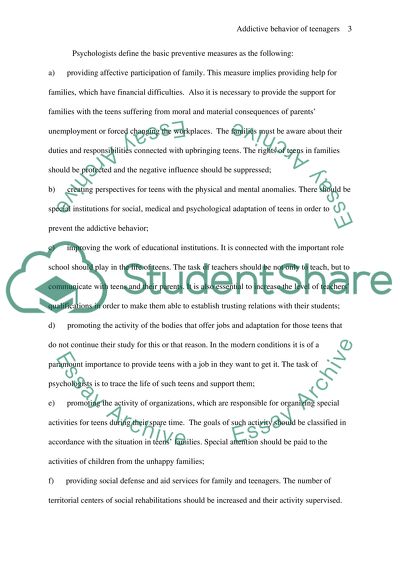Cite this document
(“Addictive Behavior of Teenagers Research Paper Example | Topics and Well Written Essays - 2000 words”, n.d.)
Addictive Behavior of Teenagers Research Paper Example | Topics and Well Written Essays - 2000 words. Retrieved from https://studentshare.org/psychology/1494434-diagnosis-ad-treatment-of-addictive-behavior
Addictive Behavior of Teenagers Research Paper Example | Topics and Well Written Essays - 2000 words. Retrieved from https://studentshare.org/psychology/1494434-diagnosis-ad-treatment-of-addictive-behavior
(Addictive Behavior of Teenagers Research Paper Example | Topics and Well Written Essays - 2000 Words)
Addictive Behavior of Teenagers Research Paper Example | Topics and Well Written Essays - 2000 Words. https://studentshare.org/psychology/1494434-diagnosis-ad-treatment-of-addictive-behavior.
Addictive Behavior of Teenagers Research Paper Example | Topics and Well Written Essays - 2000 Words. https://studentshare.org/psychology/1494434-diagnosis-ad-treatment-of-addictive-behavior.
“Addictive Behavior of Teenagers Research Paper Example | Topics and Well Written Essays - 2000 Words”, n.d. https://studentshare.org/psychology/1494434-diagnosis-ad-treatment-of-addictive-behavior.


